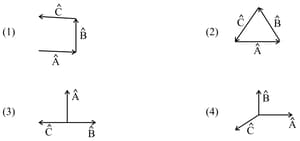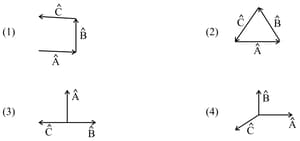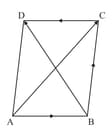Addition of Vectors
Addition of Vectors: Overview
This topic covers concepts, such as Parallelogram Law for Subtraction of Two Vectors, Properties of Addition of Vectors, Triangle Law for Addition of Two Vectors, Magnitude and Direction of Difference of Two Vectors, etc.
Important Questions on Addition of Vectors
Let be parallelogram with at origin & a diagonal. Let be the mid point of . Then the ratio in which intersect is
The scalar components of the vector with initial point A (2, 1) and terminal point B would be:
Given that Two out of the three vectors are equal in magnitude. The magnitude of the third vector is times that of the other two. Which of the following can be the angles between these vectors?
The position vectors of the vertices of are respectively.
Which of the following is the vector that represents the median ?
Consider the two vector and , the magnitude of their sum i.e
In quadrilateral is the midpoint of and is a point on such that . Then the points and
If and , then a unit vector in the direction of is
If represent unit vectors in each case, then which vector combination(s) results in a unit vector

If represent unit vectors in each case, then which vector combination(s) results in a unit vector

Unit vectors along the diagonals of the parallelogram whose adjacent sides are , are
Let If collinear with and Then equals
If the vector , and form a triangle then =
The figure shows a parallelogram . Then which of the following option is correct?

If is the circumcentre and is the orthocentre of a triangle and if is the circumdiameter then
and are the midpoints of and of the quadrilateral respectively. Then the value of _____.
The two adjacent sides of parallelogram are and . The unit vector parallel to its diagonal which starts at the common vertex of the above two sides, is
If are three vectors such that and , then is equal to
If is a regular hexagon with and then equals
